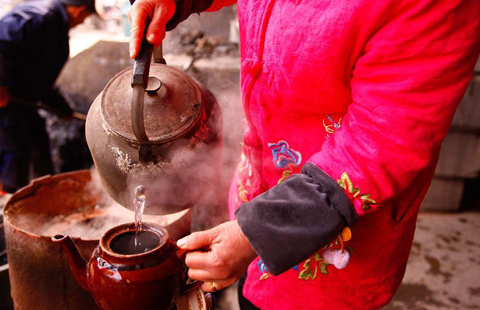China launches CBERS-4 on 200th Long March mission
(Xinhua) Updated: 2014-12-08 10:36TAIYUAN - China launched the CBERS-4 satellite, jointly developed with Brazil, on Sunday from the Taiyuan base by Long March-4B rocket, the 200th launch of Long March rocket family.
The rocket blasted off at 11:26 am, lifting the earth resource satellite into its planned orbit, according to the Taiyuan satellite launch center in north China's Shanxi province.
CBERS-4 is the fifth satellite in the Chinese-Brazilian Earth Resource Satellite (CBERS) program which began in 1988. They are used in planning and land management, forestry, water conservation, environmental protection and agriculture.
The first, CBERS-1, was launched in October 1999 with the second and third, CBERS-2 and CBERS-2B, launched in 2003 and 2007. CBERS-3 was launched last December from Taiyuan but failed to enter orbit after a rocket malfunction. There is an agreement in place to build CBERS-5, which is expected to be launched in 2017.
Sunday's mission was the 200th since April 24, 1970 when a Long March-1 successfully carried China's first satellite, Dongfanghong-1, into space.
The 199th mission was completed last month by a Long March-2D which took the Yaogan-24 remote sensing satellite into orbit.
China started work on carrier rockets in 1956. Long March rockets have since become the main carriers for satellites and spacecraft, taking more than 250 into space, including the Shenzhou unmanned and manned spaceships, China's first space lab Tiangong-1, and lunar orbiters.
Lei Fanpei, chairman of the China Aerospace Science and Technology Corporation (CASC), the main contractor for the space program, told Xinhua that the Long March rockets will make at least another 100 launches in the next seven years. The rockets are designed and manufactured by the China Academy of Launch Vehicle Technology, a CASC subsidiary.
"China has become the third country, after the United States and Russia, to complete 200 carrier rocket launches," he said.
The 100th launch came on June 1, 2007 when a Long March-3A took a communications satellite into orbit. There were seven failures in the first 100 launches. Since then, there have been just two, a better safety record than either the United States or Russia.
Carrying capacity and safety have a direct impact on satellites and spacecraft, so China's space program depends a lot on these rockets, said Li Tongyu of the academy.
Liu Jiyuan won the Von Karman Award from the International Academy of Astronautics (IAA) in 2011 and readily admits to the gap between China and other countries on carrying capacity.
Carrier rockets made by the United States, Russia and Europe are capable of lifting at least a 20-tonpayloads into low Earth orbit, while China's current rockets can only deliver less than half that, Liu said.
- Cash crunch fans expectation on RRR cut
- US extends antidumping duties on China's thermal paper
- Modern food van with ancient look in Shanghai
- China home prices continue to cool in November
- Asia's top 3 billionaires all Chinese
- Old investment remedy the treatment for China's "new normal"
- China's solar sector opposes US anti-dumping ruling
- BMW to recall 846 cars in China
















